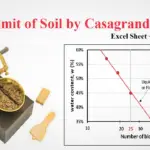Post tensioning structures are used in the design of buildings, bridges, and other structures with great tensile strength. There are several different types of materials used to make these structures, including steel cables and bars, high-strength steels, concrete, or fiberglass with or without steel fibers.
When the material is put under tension during construction (or later through the use of weights), it must be supported on one end and gripped by an anchoring system at the other end.
This is where the friction losses happen; when using these systems, it’s important to use them in such a way that friction losses are minimal.
While there are already an extensive number of guidelines and standards in place, including Post Tensioning Institute (PTI)’s procedures, there are still many uncertainties that prevent designers from being more precise with the inputs they require to complete their designs properly.
This article seeks to address those uncertainties and attempt to explain exactly what friction losses are and how they can be determined with more certainty than ever before.
Also Read: 15+ Important Points for Grouting of Post Tensioning Tendons – Backfill Grouting

What is wobble coefficient?
Lets us answer this question from scratch, the word wobble means unsteady jerking movement from one end to other or move unevenly while coefficient is a symbol or number that defines the relation between two or more variables.
While post tensioning we use strand wire that is being joined by twisting around one and other to make a tendon, this tendon is to be inserted within a profile pipe called sheathing or duct after the concrete will achieve a specified compressive strength.
Also Read: Post Tensioning, Methods, Advantages
Like Us on Facebook!
Sometimes the jacking force is applied from one end or both ends. The duct or profile pipe is to be inserted as per the designed curvature and location. The strand wire or tendon can’t be completely set as per the designed curvature and profile due to field restrictions and faulty workmanship.
Subscribe Us on YouTube!
Due to these reasons the curvature is bit shifted from the designed curvature and thus causes some loss in tensioning force. When jacking force is applied at one end, it decreases as we moves to the farther end due to friction between the tendon and the profile pipe or duct, this friction losses is of two types,

- Curvature friction loss
- Wobble friction loss
Curvature friction loss is basically the loss in tensioning or jacking force due to design curvature while wobble friction or wobble coefficient is a function of unintended deviation due to faulty workmanship or field restrictions.
Wobble coefficient is usually denoted by K and is measured in units of per length. It is found by multiplying the jacking force at any distance from jacking end with the average of the intended angular deviation from the design profile.
Usually having value of 0.0088.



















